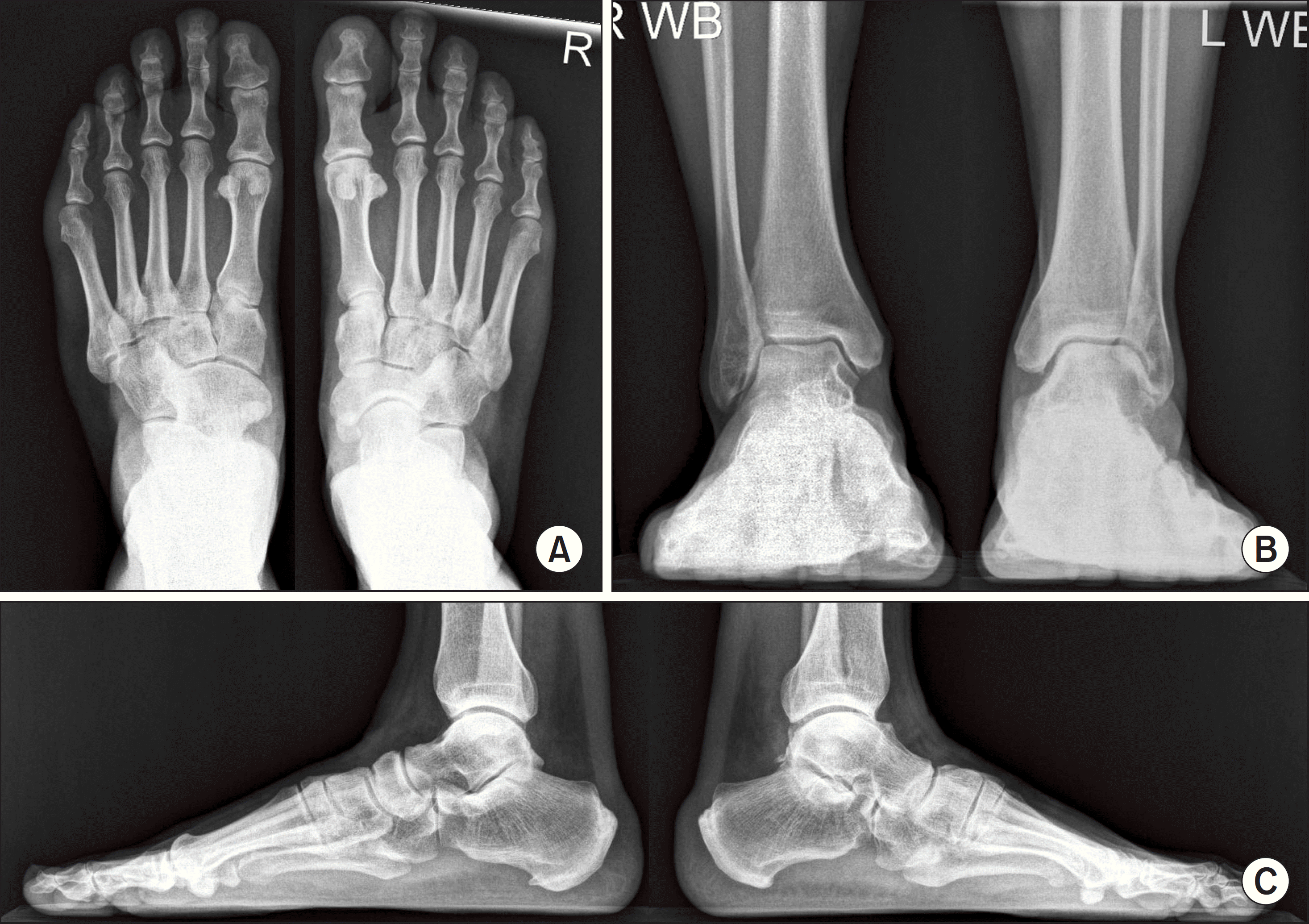Abstract
Tarsal coalition is an abnormal union between two or more bones of the hind- and mid-feet, which can occur at various rates from cartilaginous to osseous union. Talonavicular coalition is reported less frequently than calcaneonavicular or talocalcaneal coalition and has been associated with various abnormalities, including symphalangism, clinodactyly, ray anomaly, clubfoot, other tarsal coalitions, and a ball-and-socket ankle joint. Patients with talonavicular coalitions are usually asymptomatic and rarely require surgical treatment. We review the literature and report on a case of 59-year-old male patient with talonavicular coalition.
References
1. Challis J. Hereditary transmission of talonavicular coalition in association with anomaly of the little finger. J Bone Joint Surg Am. 1974; 56:1273–6.

2. Geelhoed GW, Neel JV, Davidson RT. Symphalangism and tarsal coalitions: a hereditary syndrome. A report on two families. J Bone Joint Surg Br. 1969; 51:278–89.
3. Zeide MS, Wiesel SW, Terry RL. Talonavicular coalition. Clin Orthop Relat Res. 1977; 126:225–7.
4. Cowell HR, Elener V. Rigid painful flatfoot secondary to tarsal coalition. Clin Orthop Relat Res. 1983; 177:54–60.

5. Anderson RJ. The presence of an astragalo-scaphoid bone in man. J Anat Physiol. 1880; 14:452–5.
6. Sarrafian SK, Kelikian AS. Functional anatomy of the foot and ankle. Kelikian AS, editor. Sarrafian's anatomy of the foot and ankle: descriptive, topographic, functional. 3rd ed.Philadelphia: Wolters Kluwer Health/Lippincott Williams & Wilkins;2011. p. 1614–5.
7. Andrew H, Mann RA. Biomechanics of the foot and ankle. Coughlin MJ, Saltzman CL, Anderson RB, editors. Mann's surgery of the foot and ankle. 9th ed.Philadelphia: Saunders/Elsevier;2013. p. 130–1.




 PDF
PDF ePub
ePub Citation
Citation Print
Print



 XML Download
XML Download